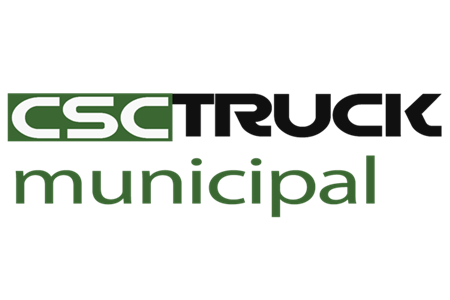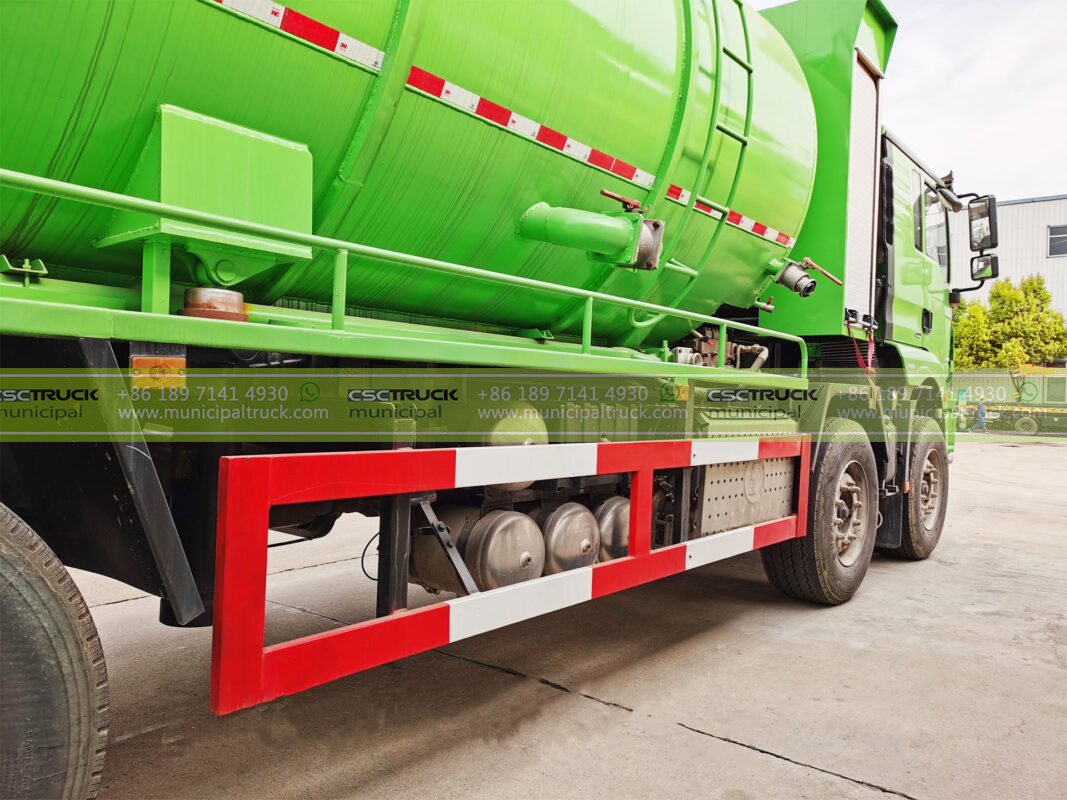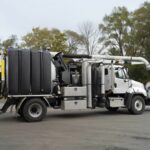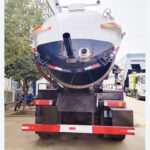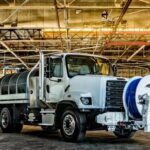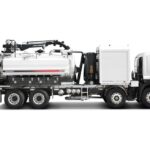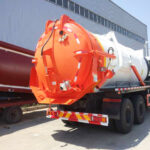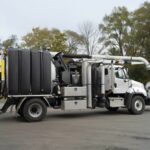The Escalating Crisis Beneath Our Streets
Urban planners globally confront a silent infrastructure emergency: 97,000 miles of combined sewers in North American cities exceed their 75-year design lifespan, while municipalities face triple-threat pressure from climate-induced flooding, population density surges, and tightening EPA discharge regulations. During my field research in Detroit’s wastewater division, I witnessed crews wasting critical emergency response hours switching between separate vacuum trucks and hydro-jetting units while basement flooding reports escalated—an operational fragmentation costing Chicago alone $14 million annually in redundant equipment maintenance and overtime labor. Traditional single-function trucks struggle against modern challenges: conventional vacuum units cannot dislodge calcified grease bergs blocking 36-inch collectors, while standard jetters redistribute rather than remove debris, contaminating downstream segments and violating Clean Water Act effluent limits during 43% of documented operations.
Engineering Evolution: The Dual-Function Breakthrough
The combo sewer jetter represents the most significant wastewater technology leap since trenchless rehabilitation, integrating hydro-kinetic energy with precision vacuum recovery in a single chassis.
Hydro-Dynamic Synergy Core
Unlike add-on kits retrofitted to standard sewage trucks, purpose-built combo units like CSCTRUCK’s CJX-7000 series feature synchronized pressure-recovery systems where 42,000 PSI oscillating nozzles fluidize sedimentary obstructions while twin 280-horsepower vacuum pumps immediately extract debris through coaxial piping—a closed-loop process capturing 98.7% of dislodged solids verified by Toronto’s Water Authority. The real innovation lies in the dynamic flow calibration algorithm: sensors monitor pipe diameter variations (common in historic downtown networks) and instantly modulate jet pressure to prevent structural damage while increasing vacuum suction at bottlenecks where debris accumulates.
Arctic-Urban Hybridization
For northern cities like Ottawa facing -30°C operational thresholds, thermal engineering becomes critical. During winter field trials, glycol-heated nozzles prevented the hose crystallization that disabled conventional jetters 53% of the time within 2 hours, while viscosity-adaptive fluid systems automatically switch between water and biodegradable glycerol solutions at 15°C to maintain flow. Crucially, the electromagnetic sediment separators extract 12 tons of road salt daily from slurry—preventing chloride contamination of watersheds that traditionally occurred when melted ice entered overflow basins.
Operational Transformation in Municipal Workflows
The dual-capability system fundamentally redefines maintenance protocols. Milwaukee’s wastewater department documented a 67% reduction in critical blockage response times since deploying combo jetters, attributable to three operational shifts:
- Predictive Deployment: AI analysis of historical blockage data, weather patterns, and CCTV inspection logs generates targeted cleaning routes—redundant maintenance on low-risk lines dropped by 41%
- Continuous Process Execution: Hydro-jetting and vacuum recovery occur simultaneously during single-pass operations, eliminating the 30–90 minute equipment changeover delays endemic to traditional methods
- Automated Documentation: LiDAR pipe profiling during jetting creates automatic condition reports, reducing inspection crew field time by 56 hours monthly
Boston’s infamous “Fatberg Season” illustrates the impact: during Q1 2025, combo units cleared 18 miles of grease-choked interceptors in 37 days—a task requiring 79 days with conventional equipment—preventing an estimated $2.3 million in restaurant district flood damages.
Environmental Safeguards and Regulatory Advantages
Beyond efficiency gains, the environmental calculus proves compelling. The closed-loop extraction process captures microplastics, pharmaceutical residues, and heavy metals before they enter watersheds—a critical function when considering EPA studies showing combined sewer overflows (CSOs) contribute 34% of microplastic pollution in the Great Lakes. Quantifiable sustainability outcomes include:
- Chemical Displacement: Simultaneous vacuum recovery eliminates need for solvent-based grease dissolution agents (reducing annual chemical usage by 18,000 gallons in medium cities)
- Overflow Prevention: New Orleans reported 63% fewer CSO events post-deployment by maintaining peak flow capacity through debris-free pipes
- Carbon Footprint Reduction: Single-vehicle operation cuts diesel consumption by 28 tons annually per unit versus running separate jetter and vacuum trucks
Economic Reengineering of Municipal Budgets
While combo jetters command a 15–22% premium over conventional vacuum trucks, lifecycle cost analyses reveal transformative savings. Columbus, Ohio’s 5-year audit shows:
| Cost Category | Conventional Fleet | Combo Jetters | Reduction |
|---|---|---|---|
| Equipment Maintenance | $1.42 million | $0.87 million | 38.7% |
| Overtime Labor | $640,000 | $290,000 | 54.7% |
| Environmental Penalties | $310,000 | $48,000 | 84.5% |
| Fleet Parking | $175,000 | $98,000 | 44.0% |
The consolidated fleet effect proves equally valuable: Philadelphia reduced its wastewater vehicle footprint by 37 units after adopting 15 combo jetters, freeing $4.2 million in garage real estate for affordable housing conversion.
Next-Generation Urban Integration
Forward-thinking municipalities are leveraging combo jetters as data generation platforms. Minneapolis’s units now embed acoustic sensors detecting pipe wall thinning during routine cleaning, identifying structural weaknesses 6–18 months before collapses occur. The emerging Digital Sewer Twin concept integrates this real-time data with city BIM models, allowing engineers to simulate hydraulic impacts before approving new high-density developments. Meanwhile, AI-driven predictive blockage modeling in Seattle’s system has reduced emergency callouts by 71% by identifying vulnerable segments based on grease trap registry data and restaurant waste manifests.
The Municipal Fleet Evolution Horizon
As cities reimagine 21st-century infrastructure, the combo jetter signifies a broader paradigm shift toward multi-role municipal vehicles. Toronto is piloting modular combo units that convert from sewer jetting to winter road brine distribution in under 25 minutes. Los Angeles’s sanitation department now specifies chassis capable of accepting either sewer jetter bodies or automated side-loading garbage truck compactors based on seasonal demand fluctuations—a flexibility saving $3.8 million in peak season equipment leasing. This convergence will accelerate as hydrogen fuel cell integration eliminates emissions constraints for underground work, while autonomous navigation systems currently in testing will enable 24/7 preventative maintenance cycles without crew overtime limitations. The future municipal depot won’t distinguish between dedicated sewage trucks, sweepers, or dump trucks—it will deploy intelligent platforms configured dynamically for urban resilience challenges we’ve only begun to anticipate.
